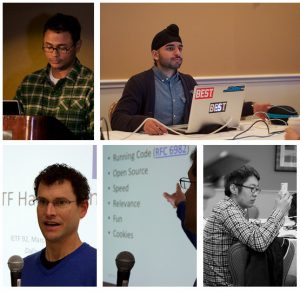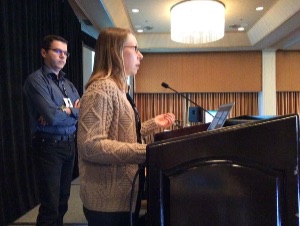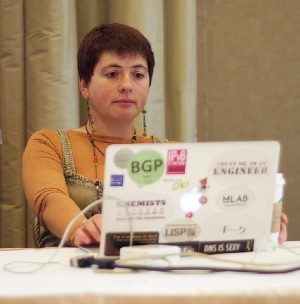Last month the first Request For Comments (RFC) was published where I was one of the co-authors. Ironically, this RFC 7649 had nothing to do with SIP, VoIP, telecom, IPv6, DNSSEC, security... or any of the other open Internet standards I've been working on in recent years!
In fact, it's not a "standard" at all but rather an "informational" document.
This document collects together a series of best practices for how someone can fill the role of the "jabber scribe" at IETF meetings, such as the IETF 94 meeting about to happen in Yokohama, Japan, starting this weekend. (Which I will not be attending due to scheduling challenges.) You can read RFC 7659 at:
As the abstract states:
During IETF meetings, individual volunteers often help sessions run more smoothly by relaying information back and forth between the physical meeting room and an associated textual chatroom. Such volunteers are commonly called "Jabber scribes". This document summarizes experience with the Jabber scribe role and provides some suggestions for fulfilling the role at IETF meetings.
The document came about because over the years that I've been involved with the Internet Engineering Task Force (IETF) I've come to both value the critical role the "jabber scribe" can play - and I've also tried to do the best I can to perform that role when I'm in working group sessions at IETF meetings. I typically volunteer as a jabber scribe in any of the sessions I'm in and try to make the experience as good as possible for remote participants.
Largely my interest is because I spent many IETF meetings as a remote participant and I knew how poor that experience can be.
A few years ago after one of the IETF meetings, I made a comment to a couple of people that we ought to write down some of the suggestions and best practices so that people could easily get some ideas for how they could help out in the role. If they were new to the idea... or even if they had been around but were interested in doing the role better.
I kept track of some ideas ... and a small group of us kept occasionally bouncing ideas around... but none of us had the cycles to write the actual document.
Then last year at, I think, the Toronto IETF meeting in July, Peter St. Andre and I were talking about it again - and this time we actually got it off the ground! More precisely, Peter kicked it off and then he and I went through several rounds of revisions and comments.
Given that Peter's authored 35+ RFCs and countless Internet-Drafts (I-Ds), he knows the IETF process inside and out and so was able to guide the document through the publishing process, including having it move through the "independent submission" stream of RFC documents. I've written a number of Internet-Drafts over the years, but none have yet progressed to an RFC. I learned a great bit from Peter through the process and look forward to using that knowledge in the future.
I greatly appreciate Peter's leadership on this - and I hope that this document will be helpful to many folks out there who are helping involve more people remotely in the IETF's standards process.
Given the timezone difference with Japan, I'm not sure how many of the IETF 94 working group sessions I'll actually be able to attend remotely... but if I do, I'll be hoping that whomever is acting as the Jabber scribe will help include those of us who are remote.
Meanwhile, it is kind of fun to have my name on an RFC, even if it's an Informational one. I look forward to being able to play even more of a role in the IETF standards process in the years ahead...




 Carrying on a grand old April 1 tradition, the IETF today released
Carrying on a grand old April 1 tradition, the IETF today released 

 This
This  This
This 

